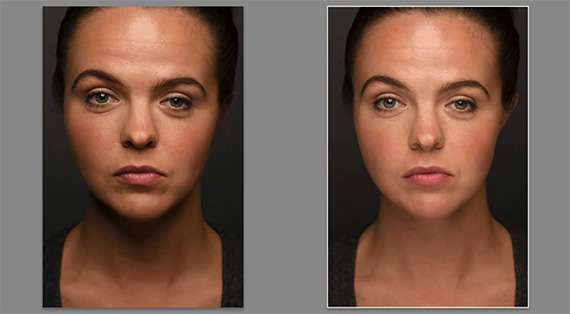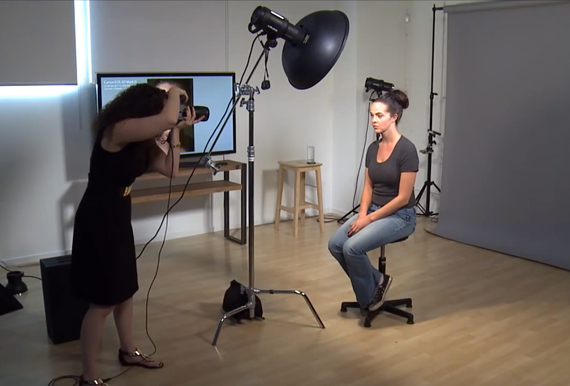Beauty dishes are widely used modifiers in portrait photography and can help to create a number of key “beauty effects.” Rather than diffusing the light like a soft box, a beauty dish focuses harder light in the center, while falling off around the edges, creating a concentrated pool of light that can both soften skin and create beautiful shadows to sculpt facial features. Although there are many ways of positioning a beauty dish, it definitely has a “sweet spot” where it works best. In the video below, photographer Lindsay Adler talks about some of the keys to finding that sweet spot:
As you can see from the video, the primary key in positioning a beauty dish is finding the right balance between the angles (contrast/shadows) and the desired skin effect.
Tips for Using a Beauty Dish
- Keep the center of the reflector lined up with the center of the subject’s face.
- Keep the dish relatively close to the subject; the beauty dish is a fairly small light source–positioning it too far away from your model will negate the benefits of the light. Also, the farther away the dish is, the more contrast you’ll see in the skin texture (i.e. rougher skin).
- If you’re looking to add more shape to the face and/or more contrast to the jaw line and cheekbones, position the beauty light higher than the subject.
- On the flip side, if your subject has wrinkles you would like to soften, don’t light from above—it will accentuate the wrinkles.
- Make sure the edge of the dish is not visible on the subject (unless you’re looking for that particular effect).
When to Use a Diffuser
“To get softer light, you diffuse.”
A beauty dish is a rather hard light source with semi-soft edges, and there are times when softer light is needed to even out the contrasts in a person’s skin. Lindsay mentions oily skin as an example: the oils often reflect light, creating bright highlights in hard light. Using a diffuser neutralizes the highlights and reduces contrast all the way around. Although many photographers use a soft box for this, if you’re still wanting the other effects of a beauty dish, a diffuser sock can be placed over the dish providing the same effect.
When to Use a Reflector
Use a reflector when you want to preserve a sense of shape (that comes from placing the beauty dish off of front-and-center), yet still want skin softness. A reflector will fill in the shadows, thereby reducing the contrast that causes texture (i.e. rough skin).

Using a reflector (right) below the model’s chin minimizes the appearance of skin texture.
“You see texture when you see the contrast between a bright highlight and a dark shadow.”
Like This Article?
Don't Miss The Next One!
Join over 100,000 photographers of all experience levels who receive our free photography tips and articles to stay current:







Leave a Reply